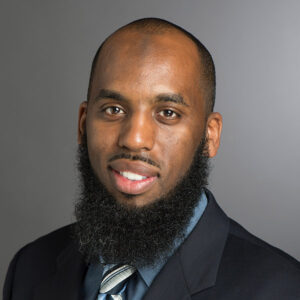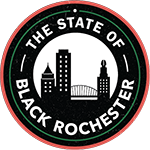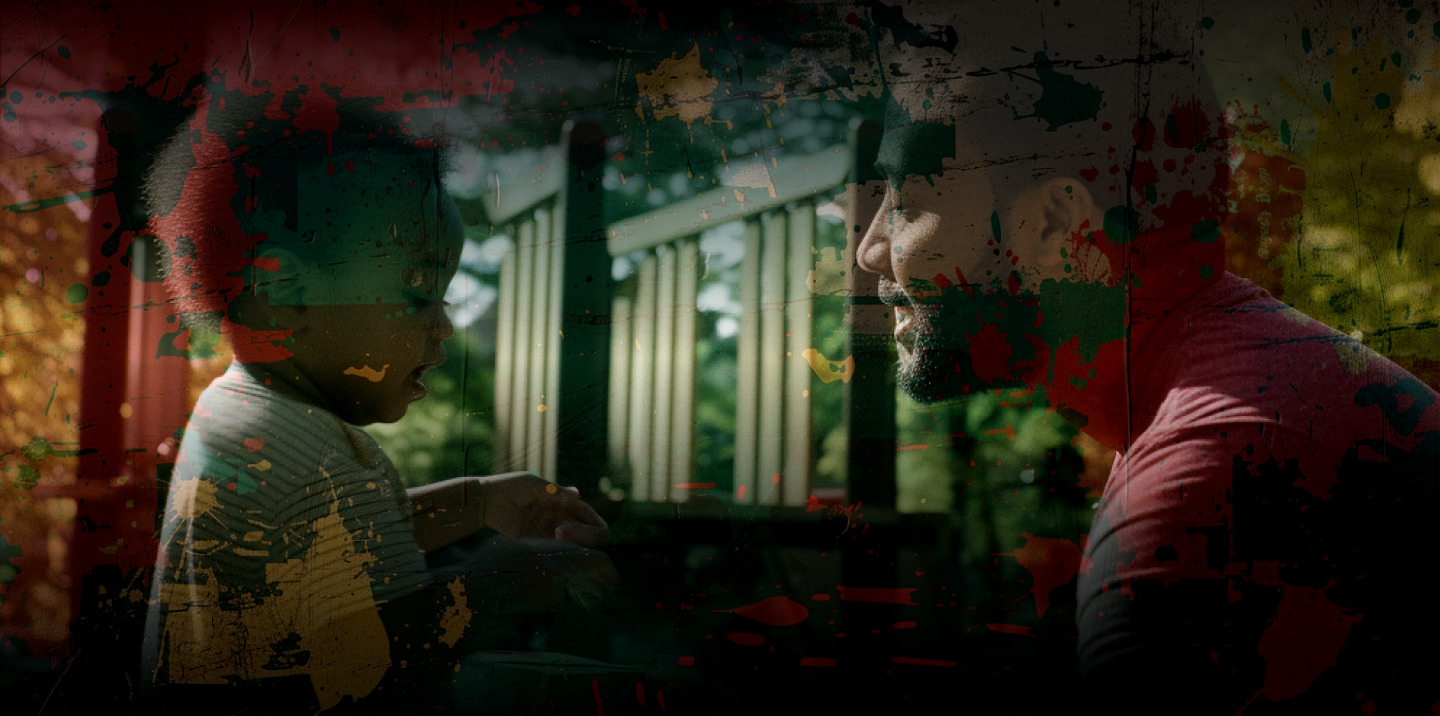 The Pervasiveness of Gun Violence in Black Rochester
The Pervasiveness of Gun Violence in Black Rochester
Violence has long been a challenge in Rochester, but especially among the Black population. Sadly, Blacks make up approximately 80% of homicide and non-fatal shooting victims each year (Macano, Altheimer, and Duda-Banwar, 2020). In 2023, the city experienced 59 total homicides, translating to a rate of 28.01. Although a welcomed reprieve from 2021 — when Rochester experienced a record 81 homicides — the 2023 homicide rate was higher than that of Atlanta, Chicago, Buffalo, and Los Angeles (Altheimer, Douglas, and D’Angelo, 2023). Forty-two of the homicides that occurred in 2023 involved a firearm, pointing to the centrality of guns in Rochester’s violence problem. Non-fatal shootings are also a challenge. In 2023, there were 204 non-fatal shooting incidents involving 244 victims (https://data-rpdny.opendata.arcgis.com/). Like the homicide rate, the gun violence rate in Rochester is higher than the national average.
The COVID-19 pandemic exacerbated violence levels in Rochester. In the three years before the emergence of the pandemic in early 2020, Rochester averaged 29 homicides and 134 non-fatal shooting incidents per year. Since the emergence of the pandemic, Rochester has averaged 66.5 homicides and 240 non-fatal shooting incidents each year (https://data-rpdny.opendata.arcgis.com/).The distress associated with living through a pandemic — as well as the associated social restrictions — was likely a driving force that increased overall levels of crime. Additionally, the constraints placed on the criminal justice system limited the impact of formal social controls on violence levels. Pre-pandemic levels of violence, while problematically high, serve as a barometer of our ability to reverse some of the devastating impacts that the pandemic had on the community.
Most of this violence is concentrated in Rochester’s most marginalized communities. Rochester ranks among the leaders nationally in poverty, and this poverty is often concentrated in disadvantaged minority neighborhoods. For example, parts of the 14611 zip code in southwest Rochester rank in the 97th percentile nationally for poverty (www.opporunityatlas.org).
A Two-Pronged Approach to Gun Violence in Black Rochester
Although both homicides and gun violence disproportionately involve Black victims, the proportion of both victims and offenders relative to the overall Black population is very small. Further, even in the most challenged neighborhoods in Rochester, violence is disproportionately concentrated in a few street segments–such as the area between the intersection of Jefferson and Bartlett and the intersection of Jefferson and Frost. This suggests the need for a two-pronged approach when dealing with violence in Rochester:
- Long-term strategies that seek to lower poverty rates and increase opportunity in some of the city’s most marginalized communities, and
- Focused interventions that target enforcement and service provision on individuals at high-risk of engaging in violence.
Violence reduction efforts that alienate entire communities should be rejected — even if they result in some reductions in crime.
Violence Exposure: Implementing a Trauma-Informed Response
Although most Rochesterians do not engage in serious violence, exposure to violence represents a challenge for the Rochester community. The concentration of violence in our most challenged neighborhoods leads to elevated levels of exposure to violence for City residents. Research has shown that prolonged exposure to community violence can lead to depression, anger, anxiety, and violence (Lynn-Whaley & Sugarmann, 2017). Yet, few programs exist that seek to address the trauma caused by crime and violence in Rochester. Higher exposure to violence among Black Rochesterians reveals the need for culturally responsive trauma responses.
That Challenge of Policing in Rochester
Policing has been the primary mechanism to respond to violence in Rochester. Nearly 20 percent of the City’s budget goes to the Rochester Police Department (RPD). Policing plays a significant role in reducing violence, and some of the most effective violence reduction strategies involve police, but crime reduction is also predicated on how police treat the community members they serve. Aggressive police practices and/or police misconduct undermine public trust, tear at the social fabric, and eventually lead to more crime.
Rochester witnessed this firsthand with the death of Daniel Prude. In March of 2020, the RPD received calls of a naked man roaming in the street. Video from the incident showed officers encountering Mr. Prude as he ran naked down Jefferson Avenue on a frosty winter night, showing signs of mental deterioration. Initially, Mr. Prude complied with the officers’ commands but grew agitated as he spoke incoherently while sitting naked on the concrete. Out of concern about exposure to bodily fluids, officers placed a spit hood on Mr. Prude, which agitated him further. In response to his agitation and attempts to flee, officers utilized a restraint technique called segmenting–whereby officers retain a noncompliant person by pinning him at the waist and head–which ultimately led to Mr. Prudes suffocation and death.
The City of Rochester did not acknowledge or reveal the footage until several months later, with both the Mayor and RPD Chief publicly blaming each other for the lack of transparency. The footage of Daniel Prude’s killing led to several nights of public protests, each followed by an aggressive police response that further exacerbated mistrust and disdain for the Rochester Police Department.
Daniel Prude: The Aftermath
The aftermath of the Daniel Prude incident pushed the city to reassess its responses to those in need. The Commission on Racial and Social Equity (RASE) was created to identify structural barriers to racial equity and mechanisms to reduce them. The city also created the Office of Violence Prevention and created a unit of crisis prevention services to better support community-based alternatives to policing. Additionally, RPD changed its protest response policy to limit the types of force that can be used during protests and when certain force is permitted.
It is too early to determine if these changes will usher in the community transformation that so many of us desire. However, the Daniel Prude incident and subsequent response led to some community soul-searching that has shifted expectations around crime and justice. What is clear is that the community now desires a crime response that balances principled policing approaches with service provision by community-based organizations.
As I close this essay, I will share a few recommendations that I hope will keep the momentum going. First, embrace innovative ideas and be willing to change course. As we evaluate new efforts, not everything will work, but a spirit of innovation is required to accomplish the improvement we desire. Second, empower the younger generation to play critical roles in our community. This empowerment can add an essential element to our attempts to bring about innovation and change. Third, continue to expand the role of community-based responses to community crises. In the end, we all have a stake in a safer and more equitable Rochester.
References
Altheimer, I., Douglas, A., and D’Angelo, V. (2023). 2023 Homicide Statistics for 24 Cities. Retrieved from 2023 Homicide Statistics for 24 U.S. Cities
Lynn-Whaley, J., & Sugarmann, J. (2017). The relationship between community violence and trauma. Retrieved from http://vpc.org/studies/trauma17.pdf
Macano, K., Altheimer, I., and Duda-Banwar J. (2020). Firearm Violence in 2020: Rochester, New York. Retrieved from Firearm Violence in 2020: Rochester, New York Part I – Analysis of Shooting Victims.

